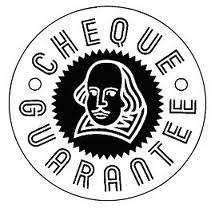Cheque guarantee card

A cheque guarantee card was essentially an abbreviated portable letter of credit granted by a bank to a qualified depositor in the form of a plastic card that was used in conjunction with a cheque. This allowed retailers to accept cheques and providing that the retailer wrote the card number on the back of the cheque, it was signed in the retailer's presence, and the retailer verified the signature on the cheque against the signature on the card, then the cheque could not be stopped and payment could not be refused by the bank. This arrangement worked only for cheques drawn on an account provided by the bank that issued the card and could result in an overdraft with penalty interest.
After the introduction of debit cards there was a rapid decline in the use of cheque guarantee cards and these facilities were generally phased out in the countries that operated them during the 2000s. The Irish cheque guarantee scheme officially ended on 31 December 2011, ending the last such scheme in existence.
History
The first such scheme was introduced in the UK in 1965.
During the 1980 cheque guarantee cards were often combined with ATM cards for convenience. Usage of cheque guarantee system declined significantly during the 1990s with the introduction of debit cards.
In 2001, with the abolition of Eurocheques in Germany and other European countries, the cheque guarantee system also ended in those countries and many retailers stopped accepting cheques altogether. In 2011 after many years of decline, the Payments Council ended the UK cheque guarantee system, leaving Ireland as the last country to still operate a cheque guarantee card scheme.
The Irish Paper Clearing Company Limited announced that the Irish system would officially end on 31 December 2011 bringing the last such scheme to an end.[1]
Ireland
As of 2010, there were 1.4 million valid cheque guarantee cards in Ireland; however, just 45% of debit cards and 39% of ATM cards held the cheque guarantee function. The Irish cheque guarantee scheme covered sums of up to €130 per cheque. In 2010, the average value of a written cheque was €5,000, and only 1.5% of all cheques were used in conjunction with a guarantee card. Between 2007 and 2010, cheque usage decreased by 30%. In lights of these statistics, the Irish Paper Clearing Company announced in December 2010 that Ireland cheque guarantee card scheme would cease on 31 December 2011 thus bringing the last such scheme in the world to an end.[1]
United Kingdom
In the United Kingdom the scheme was first trialled in 1965 and fully introduced in 1969, with a limit of £30. The limit was increased to £50 in 1977 and then to £100 or £250, at the bank's discretion, in 1989.[2] As of 2009 the scheme was only used to guarantee 7% of the 1.4 billion cheques issued each year,[3] a figure which itself is declining due to the popularity of other means of payment such as debit cards. The Payments Council therefore announced a decision in September 2009 to withdraw the cheque guarantee scheme on 30 June 2011, and the scheme has now been closed.[3][4]
See also
References
- 1 2 "Cheque Card Guarantee Scheme". IPSO. Retrieved 18 September 2015.
- ↑ Review of the UK Domestic Cheque Guarantee Card Scheme Archived 13 March 2011 at the Wayback Machine., Payments Council, June 2009
- 1 2 The Cheque Guarantee Card Scheme announces closure date of 30th June 2011, press release from UK Payments Administration, 25 September 2009. Archived 2 October 2009 at the Wayback Machine.
- ↑ King, Mark. Abolition of cheques to be reconsidered, The Guardian, 14 April 2011